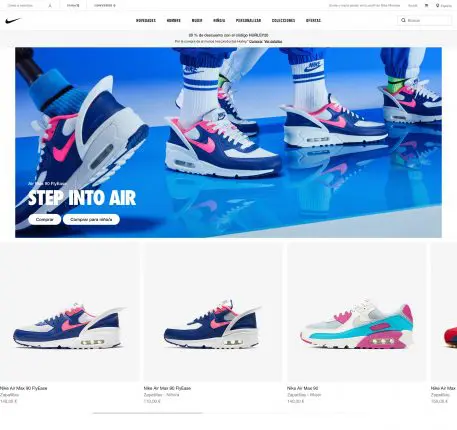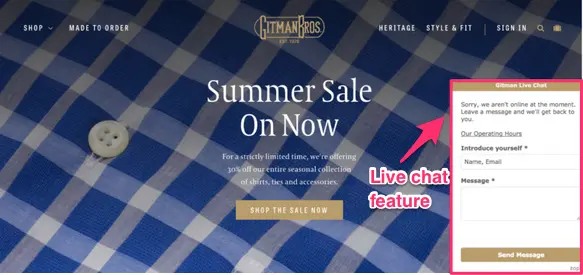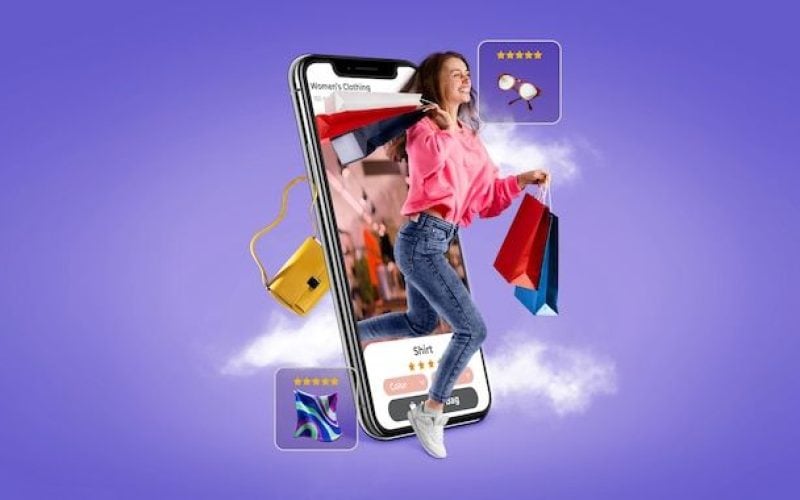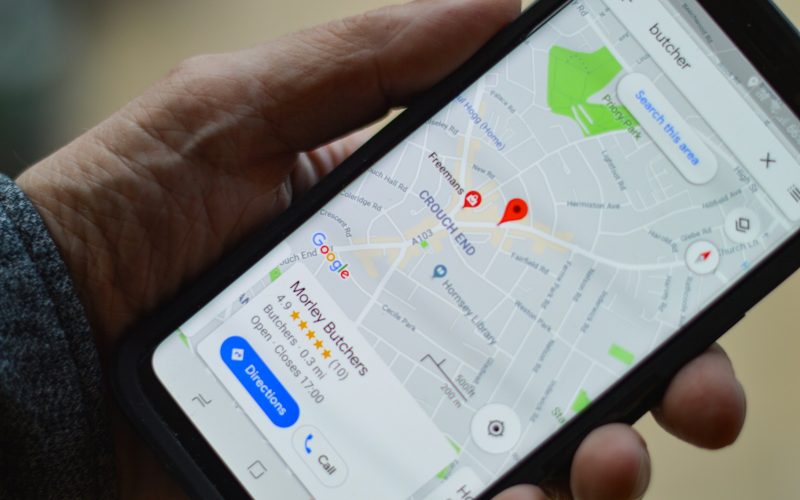We think it is the best time to create an online shop with the best Ecommerce agency possible, so we bring you this interesting article with some valuable tips for you to get ready.
Major online stores, such as Amazon and eBay, come with restrictive seller policies. These places minimize the branding of retailers to maintain their own homogeneous image.
Sellers with their own online stores play a different game. They have total control over their customers’ experiences. Whether you are reorganizing product placement or highlighting a sale in a store, merchants can use their website to connect directly with their customers and encourage purchases.
But with so much freedom, online store owners may not know where to start with curating their store.
To start attracting buyers and retaining loyal customers, here are our 20 killer tips for creating a successful online store. These strategies cover how shoppers experience each element of your online store to explain how each aspect should be designed to attract shoppers and increase sales.
By following these strategies, marketers can target customers’ interests through their online store to make their business stand out among less savvy merchants.
1. Attractive web design
It doesn’t matter if you have the best possible product in its niche and the best customer service on top of that: if your store’s web design is lousy, your online business presence is doomed. According to a Kissmetrics study, 93% of shoppers consider visual appearance to be the most important factor when making a purchase.
To create a profitable online store, it is best to hire good professionals to ensure a great result, whether it is us as an expert agency in eCommerce or another that can also provide its Know How, knowledge in usability, conversion … clean designs, intuitive designs and follow the latest trends in web design. The important thing is that you are well advised and supported by a team of web design professionals.
Web design should captivate the attention of site visitors. Impact and retain customers with full-width images and minimal text.
Design elements should captivate visitors, such as using full-width images and avoiding distractions with minimal text. Here is an example of a design Nike chose for its online store:
2. An impressive “About Us” page.
If a visitor accesses your “About Us” page, that means he is already interested in you, your company or your product and you are giving him the opportunity to prove to him that your product is the best. What you must do is to clearly explain what it is, what it does and, most importantly, what your product offers to customers, what differentiates it from the competition, always find that something that stands out, that you offer and others do not. All testimonials, achievements and any kind of positive comments from social media or Instagram photos with real people trying your product are welcome there.
Make sure you don’t waste this opportunity, as it may lead you to win a customer. Your contact information should be clear and easy to find in your about us section and also throughout your website. Be sure to mention your:
Contact email
Your company address (write one with either your office or fiscal address as it will generate trust)
Link to your social networks
Covering your “About Us” page with too much information can be overwhelming for site visitors. Some online stores, like seedlipdrink in the example below, opt for a minimalist design to keep information clear and easily understandable.
The “Contact” information is generally placed at the bottom of a website, and users are used to finding it there.
Here are some practical tips for creating your “About Us” section:
-Include basic information about your business on the page, such as contact information, address and social media accounts.
-Avoid cluttering the “About Us” page with too much information. Keep visitors engaged with a minimalist design.
3. Partner with other brands.
Giving your hard-earned money to a little-known company is not easy for most buyers. Establish your reputation by showing which companies are working with you. They don’t necessarily have to be on the scale of a Coke or Apple, but even small companies can add some confidence to yours and your product.
The more members you have, the better. This is how Amasty shows its established relationships with its partners:
Here are some practical tips for partnering with other brands and influencers:
– Highlight partner companies on your home page to immediately show your reputation to visitors to your online store.
– If you have a large number of members, show them all. The more partners you have, the more confidence the buyer will have.
4. Offer the best online support
Your consumers should know that they will receive assistance after making a purchase, if necessary. Ensuring post-purchase troubleshooting and pre-purchase consultation can turn potential buyers into loyal, repeat customers.
The most comprehensive and useful type of support is a 24/7 live chat feature. This tool can increase your site-wide conversion by 10% or more. If you do not have the resources to provide 24-hour assistance, you still need to provide some type of service to help people during working hours.
As an example, you can see how the clothing store, GitmanBros, offers live chat to its customers:
Ta company keeps the chat function easily accessible, but unobtrusive to buyers in the lower left corner.
Here are some practical tips for providing excellent online support:
- Offer support at all stages of the shopping experience to encourage new shoppers to make their first purchase and returning customers to continue shopping.
- Make customer service features, whether it’s a phone line or chat box, visible from the home page so shoppers are aware of those services.
5. Provides different payment options
An online store cannot exist without payments. It offers a wide variety of popular payment options for your customers so that they can always make a purchase easily.
PayPal reigns as the main payment solution, but there are other options also valid for your business. Check Entrepreneur’s list of 15 other payment methods used to see if there is another service that meets the needs of your online business, keep in mind that PayPal charges high fees and you will surely find another option that you can enable in parallel even if PayPal is the most used and known.
Here are some useful tips for providing payment options:
- It allows sellers to create an account in your store and save their payment information to make future purchases more seamless.
- Offer a wide variety of popular payment options so that every consumer can easily make a purchase in your store.
6. Advertise on social networks
Advertising on social media channels is a powerful way to connect with many potential customers in a creative and fun way. Social media advertising can be anything from a simple Facebook post to a taco-shaped lens on Snapchat.
[ Source ]
Use tools, such as Google Analytics, to track which channels your target customers use the most and focus your marketing efforts on these platforms. If you’re confused by the relatively new terrain of social media, check out these guides to Facebook advertising, Instagram advertising, and Snapchat advertising to get started.
Here are some practical tips for advertising on social networks.
- Social media marketing allows for a lot of creativity, so try to implement the personality of your key buyers in your ads.
- Use social media analytics to track the success of your ads and strategize on how you can improve future promotions.
7. A useful, SEO-driven blog
Running a blog is an opportunity to generate more traffic to the store. Posts that contain SEO keywords and contain useful information for consumers are likely to rank high in search engine results. Blog posts that rank well and encourage people to visit your site are a springboard for people to visit your product pages and complete purchases.
[ Source ]
A blog is also a means to connect with the public on a deep level. Seeing how customers respond to the content you produce can inform your strategies for meeting buyers’ needs and wants. Blog posts build buyer confidence when they provide some type of value to the reader, such as offering expert advice on the use of your product or an industry-related topic.
Here are some practical tips for creating a store blog:
- Use SEO tools to measure monthly search volume and keyword difficulty of terms. Terms with high monthly search volumes and high difficulty rankings will be more difficult to rank for.
- Use Google Analytics to track page views of your blog posts. Consider previous publications that received a large number of hits when planning future content.
8. Build buyer confidence with reviews on your website.
Reviews and ratings of your products greatly increase the trustworthiness of your company. Online shoppers can’t meet sellers in person, so they rely on reviews from other shoppers to evaluate new brands and products. Reviews on product pages save consumers time by quickly showing what other customers think about the product, thereby building trust and speeding conversion.
Product reviews are most compelling when they are plentiful. To produce more feedback, don’t hesitate to ask your customers to leave a comment after making a purchase. Customers who are satisfied with your product often won’t consider leaving a review because everything is already fine. Give them a gentle nudge, and they’ll probably be happy to share their positive experience with others.
Here are some practical tips for using product reviews:
- Indicates the average rating and the number of reviews at the top of each product page (next to it) and at the bottom where it shows the content of the reviews to increase the visibility of the comments.
- Incentivize leaving a review by offering shoppers a small discount after making a purchase if they leave feedback.
9. Seo optimization for your eCommerce
Your online store must receive traffic in order for purchases to be made. The key to generating traffic? Search Engine Optimization. By incorporating SEO keywords in your product titles and descriptions, your online shop is more likely to rank higher in search engine results. Increased visibility is the key ingredient for higher site visits and more conversions.
If you are unsure about how to find SEO-friendly keywords or how to incorporate them into your store, check out this helpful guide on SEO optimization for e-commerce websites.
Here are some practical tips to make your online store SEO-friendly:
- Use SEO tools to find keywords that have high enough monthly search volumes and low enough keyword difficulty for your website to rank.
- Write down the SEO keywords you are considering adding to your product pages to see what results you will be competing with. If the results are important sites, consider changing your term to something less competitive.
10. Mobile-first for your online store
Mobile shopping accounted for 30% of online purchases last year. This figure is only increasing: Business Insider predicts that by 2020 mobile shopping will account for 45% of all e-commerce purchases.
With the increasing use of phones for online shopping, merchants must ensure that their site design is compatible with mobile devices to ensure that shoppers can make purchases no matter what device they are using. Tech-savvy marketers can check operating system requirements, such as these iOS guidelines, to make sure your site is responsive. Merchants can also use online store design templates that are already configured to be responsive to mobile devices to make their site device-friendly.
Here are some practical tips to ensure that your site is responsive to mobile devices.
- Opt for vertical layouts over horizontal layouts to make it easier to scroll and view your content on phone screens.
- Test the mobile responsiveness of your store by loading it on a phone and browsing to check for errors.
11. Analysis and iteration follow-up
Online store owners cannot improve their growth strategies without monitoring their progress. The best way to track your sales activity and customer behavior is to use a tool like Google Analytics. This program provides sellers with clear metrics about their store, such as the percentage of product sales, the number of site page views and the number of abandoned shopping carts. You can easily set up Analytics for your online store by following these instructions.
Continuously track your sales metrics with Analytics so you can gain long-term insights on how to engage customers more effectively and encourage more purchases. Merchants who need help setting up Analytics or are unsure about how to form data-driven insights should consult our guide to using the tool in their online store.
Here are some helpful tips for tracking and iterating marketer activity with Google Analytics:
- When setting up Analytics with your store, enable the “enhanced e-commerce tracking” feature to get a wide range of information about your merchant’s activity.
- Create segments in Google Analytics to form data-driven insights into your key buyer groups. Instructions for setting up segments are here .
12. Free shipping offer.
Thanks to Amazon Prime, free shipping is now an expectation of online shoppers. The additional cost of standard shipping can easily deter buyers from completing their purchase at checkout. Sellers who can afford to offer free shipping should provide the service if they are not already there to incentivize purchases.
While the initial cost of offering free shipping may hurt at first, many merchants see a greater return with increased purchases after offering the policy. To make sure customers notice your generous policy, highlight in your online store that you offer free shipping, as Thrive Market does in the photo above on its home page.
Here are some practical tips for attracting buyers with your shipping policy.
- Offer free shipping to reduce the total cost of your item for shoppers and incentivize purchase.
- Highlight throughout your online store that you offer free shipping so that shoppers are motivated to continue shopping.
13. Build your outreach list
Growing your business involves more than your customers – you also need to reach out to people in your industry who can help you reach more buyers within your target audience. Networking with the right groups allows marketers to generate product feedback and expand their reach to connect with as many customers as possible. Vendors should consider contacting:
- Traditional reporters: writers for publications that specialize in your industry and can create content about your products.
- Industry bloggers: writers who create content on blogs that focus on their industry and showcase products like yours.
- Social media influencers: people who comment on your industry on social media and have a large number of followers
- Like-minded entrepreneurs: like-minded entrepreneurs who are engaged in your industry and familiar with your products.
These four groups can quickly spread the word around your product, so it pays to reach out to the network and share why you may be valuable to work with.
Here are some practical tips for building your outreach list:
- Use tools like Buzzsumo and Voila Norbert to find influencers in your industry that you can contact.
- Organize the people you want to communicate with by specialized categories, such as their number of followers or likelihood to respond.
14. Use the quick tools on the front of the web.
Users who have no programming experience can use the cms content manager that the company has chosen for them, such as Shopify , BigCommerce or WooCommerce, to set up their online store. These programs have a very intuitive visual Composer, so you can easily customize your sections without any programming knowledge.Shopify WooCommerce allows sellers to easily customize the design of their online store.
Here are some practical tips for using front-end tools on your website:
- Make sure your chosen web design aligns with the personalities of your key buyers and your brand image. Software, such as Shopify, WooCommerce and BigCommerce, will generally have recommendations on what types of businesses are suitable for each design.
15. Keep an eye on the competition
Customers browse online stores looking for the lowest prices and the best overall shopping experiences. To keep shoppers attracted to their store, merchants should identify stores that are similar to their own business with which to compare. Do these stores offer 60-day or 30-day return policies? Do you offer free shipping or only paid options? Discovering what makes competitors more advantageous allows marketers to determine what they need to change about their business to keep repeat customers loyal and attract new buyers.
Here are some practical tips for assessing your competence:
- Look for products like yours in major marketplaces, not just other online stores. Places like Amazon and eBay are excellent indicators of competitive pricing for your products and industry. Use your rates as a reference for your own prices to attract more buyers.
- Consider the design of competitors’ sites, not just their product offerings. Look at how it could be more user-friendly than your store and how it could be attracting buyers.
16. Use quality photos.
Humans are visual creatures. We process images in 1/10 of a second and understand visual information 60,000 times faster than words. With this natural tendency towards images, product images make a strong immediate impression on shoppers. It is essential to use clear, high-resolution photos that highlight product details to quickly attract buyers without losing their attention.
Show multiple angles of your product with photos so that buyers can fully imagine the item and know all its details. Not being able to see the product in person, shoppers will feel more confident with their online purchase if they have a complete visual understanding of the item.
Here are some practical tips for using high-resolution product photos:
- Enable a 360-degree photo tool on product pages so shoppers can see the full view of a product.
- Enable a zoom feature on product photos so shoppers can examine your items in more detail.
17. Offer incentives.
Online store owners don’t have to worry about marketplace rules limiting what they can include on product pages or in communication to shoppers. Retailers with stores should take advantage of this control by offering incentives to shoppers. Whether it’s a pop-up discount on your store’s home page or a promotional email about an ongoing sale, marketers must actively communicate with buyers with different types of incentives to make purchases.
Marketers should use data-driven tools (see tip 11) to segment their customers and target incentives to different groups of buyers. For example, you can send an email offering a discount on a first purchase to site visitors who visited product pages but never completed a purchase.
Here are some practical tips for offering incentives:
- Use pop-up discount boxes on your site occasionally, not frequently. Bombarding your site visitors with pop-ups is likely to irritate them and drive them away from your store.
- Track the most frequently used coupon codes to determine which promotions encouraged the most purchases and should be used again in the future.
18. Encourage sharing on social networks
Organic word-of-mouth marketing on social media can drive the growth of your e-commerce business. Public discussions of your brand and products on social media channels serve as social proof: the psychological phenomenon of people assuming the behavior of others reflects the correct behavior. Online shoppers can’t see your products in person, so they consider what other customers have to say about your business on Facebook to determine if they should make a purchase.
Encourage social media buzz around your product by initiating a campaign that encourages sharing. For example, a brand could offer customers an entry into a contest if they leave a comment on a social media post or tag a friend. Marketers should also encourage social sharing by making their social media channels easily accessible on their site.
Here are some practical tips to encourage social exchange:
- Don’t limit social exchange to buyers! Reach out to other brands you have partnered with and encourage them to share information about your business or tag your brand in their social media content.
- Don’t break the chain of sharing. If someone mentions your brand on social media, try to continue interacting with tactics such as retweeting or commenting below the post.
19. Take advantage of e-mail marketing
Email marketing is an easy way for marketers to build relationships with their customers. Marketers can send targeted messages to shopper segments that address the specific desires of each group. By attracting the interests of buyers, email marketing is a powerful tool to encourage sales and increase revenue.
To get started, you will need to collect buyers’ e-mail addresses and make sure they want to receive your messages. There are many opportunities to ask shoppers if they would like to receive email notifications, such as at checkout or even in a pop-up window while browsing.
Not every shopper will agree to subscribe to your email list, but the group of customers who will do so will be an enthusiastic group of shoppers who are excited about your brand and who are likely to respond well to your email marketing.
Here are some practical tips for using email marketing:
- Use an email marketing tool, such as Campaign Monitor , to track the success of your messages, such as how many times they were opened or which links were clicked most often.
- Track which customers unsubscribe from your email list with email marketing software. Using other information from their buyer profile, try to infer why they might have unsubscribed and how you can use that knowledge to avoid future cancellations.
20. Offer refund policies and money-back guarantee.
Buying a product online with a limited return policy is risky. The customer cannot see the item in person, so they have to expect that the product is actually as described. With the possibility that the product may not meet your standards, most buyers will not purchase a product online if returns are not accepted.
Sellers can build buyer confidence and encourage purchases by offering generous return policies and money-back guarantees. Allowing customers to return an item if they change their mind or if it doesn’t match the product description shows other consumers that you trust your buyers and want to provide value.
A money back guarantee is very important. You must give your customers a way to respond in case they don’t like the product. It does not mean that they will necessarily request a refund. Of course, some will, but most people just need to know that there is a backup option. People are risk averse by nature, so this flexible payment policy will be attractive to them. As a result, you will get more customers than you would have if you didn’t have a money-back guarantee.
Here are some practical tips for return policies and money back guarantee:
- Create a policy page on your site to describe the exact terms and conditions of acceptable returns and money-back guarantee claims. Your customers will appreciate the transparency of the site when trying to understand their orders.
- Consider offering free shipping on returns. Providing customers with free returns is an additional cost to retailers, but offering the policy also carries the return of encouraging brand loyalty with excellent customer service.
Preserve your online store for more conversions
Online stores give retailers complete autonomy over customer experiences. Instead of following the policies of a marketplace, a seller can set up its own online store on its terms to shape its buyers’ product interactions.
Entrepreneurs with this freedom as an online store owner can encourage more conversions if they know how to create each element of their store. By following the strategies outlined in this guide, retailers can become more aware of how customers perceive each element of the store and apply that knowledge to build their store. Curating an online store to align with the desires and motivations of key shoppers gives marketers an edge over less conscientious competitors.
We hope you have been useful all these tips to create your e-commerce, now it’s time to choose, if you are going to do it yourself we can help you with the strategy or positioning and if not and you have budget for it, it is always advisable to have from the beginning with a reliable agency to establish the best bases, because if the online shop is not well designed or programmed will be much more difficult to generate sales or new leads for your product to move smoothly and sales increase week after week.
Contact us to start your online project!










